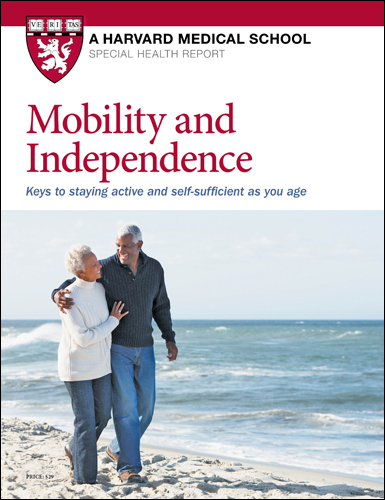Activities to sharpen your eye‑hand coordination
Racquet sports, swimming, and even playing catch can help.

Think of all the things you do with your eyes and hands at the same time—such as drive a car, cook a meal, pick up an object, or grab a handrail. They’re made possible in part by the coordination of the information your eyes take in and the signals your brain sends to your arms and hands. This eye-hand coordination is key to maintaining your independence.
Unfortunately, eye-hand coordination declines as we age. Reflexes, speed, and accuracy dull — possibly because of vision loss, poor health, or changes in brain wiring. "Many people in our society over age 60 who eat a Western diet and don’t get enough exercise have tiny, imperceptible ‘ministrokes’ in their brains. These strokes can disrupt connections in important brain coordination centers. In addition, we all lose some brain cells that produce dopamine, a chemical that helps the brain regulate movement and coordination," explains Dr. Andrew Budson, a neurologist and chief of Cognitive and Behavioral Neurology at VA Boston Healthcare System.
The good news: "You can improve eye-hand coordination by exercising, practicing skills, and treating underlying conditions," Dr. Budson says.
An eye-hand workout
All exercise is good for your brain, and the following may be especially helpful for eye-hand coordination.
Racquet sports. In tennis, racquetball, or pickleball, your eyes watch the ball, and your brain instructs your body to meet up with it.
"The speed of the moving ball is challenging. Your brain has to manage that hand and arm not just where you can see it, but also where you can’t see it, as the ball flies by and you reach behind you or to the side. It forces your reaction time to be faster," says Jennifer Packard, an occupational therapist at Harvard-affiliated Spaulding Rehabilitation Hospital.
Swimming. In swimming, you often use your arms and hands outside your field of vision, forcing the brain to use its mind’s eye. "You visualize in your head what your hands are doing, without watching them," Packard says. "Plus, the sensory input is different in the water, which challenges the brain."
Tai chi. This ancient martial art uses a series of slow, flowing motions and deep breathing. You gradually shift your weight from one pose to another, which improves your reflexes, balance, strength, flexibility, and range of motion. Tai chi reinforces all of these components of movement.
Noncontact boxing. This is a type of exercise program that involves wearing boxing gloves and shadow boxing or hitting soft pads. It’s especially challenging for your brain as you quickly aim left with your right hand, or aim right with your left hand.
"There is a huge benefit in requiring your brain to cross the midline—an imaginary vertical line drawn from the sky down through your nose to your bellybutton and in between in your ankles," Packard says.
Eye-hand activities
You don’t have to break a sweat to sharpen your eye-hand coordination; lots of fun activities can help. You could
- play catch with a friend
- bounce a ball against a wall
- play cornhole (a beanbag game)
- take up juggling
- play darts (magnetic darts are a safe choice)
- sew or knit
- paint or draw a picture
- play a video game.
Adapting activities
If any of these activities seem too challenging, you may be able to modify them to make them easier.
For example: "If a ball is too small for catch, blow up a balloon and hit it back and forth," Packard suggests. "Play pickleball instead of tennis, since the pickleball court is smaller and you don’t have to cover as much ground to hit the ball. Or play Ping-Pong with a pickleball or a light plastic baseball, which may be easier to hit than a Ping-Pong ball."
If you need assistance, occupational therapists can help you modify activities and create programs tailored to your coordination needs. Insurance may cover services only if they’re medically necessary; ask your doctor if you qualify.
Whether you’re training with a therapist or on your own, make your practice more challenging over time; use a smaller ball or try a more difficult activity. "If you can increase the challenge once a month, that’s an impressive feat," Packard points out.
The big benefit: a carryover into your daily activities, such as driving or grocery shopping. "Reduced eye-hand coordination is not something you have to accept," Dr. Budson says. "You can start improving it right now."
Image: © adamkaz/Getty ImagesAbout the Author

Heidi Godman, Executive Editor, Harvard Health Letter
Disclaimer:
As a service to our readers, Harvard Health Publishing provides access to our library of archived content. Please note the date of last review or update on all articles.
No content on this site, regardless of date, should ever be used as a substitute for direct medical advice from your doctor or other qualified clinician.













